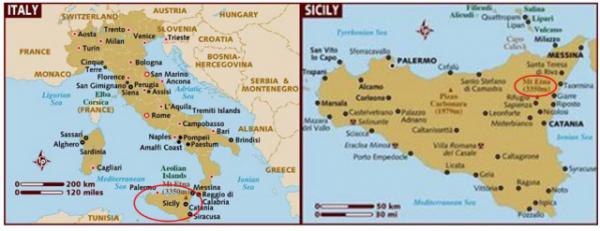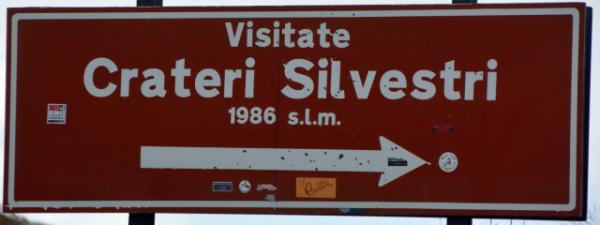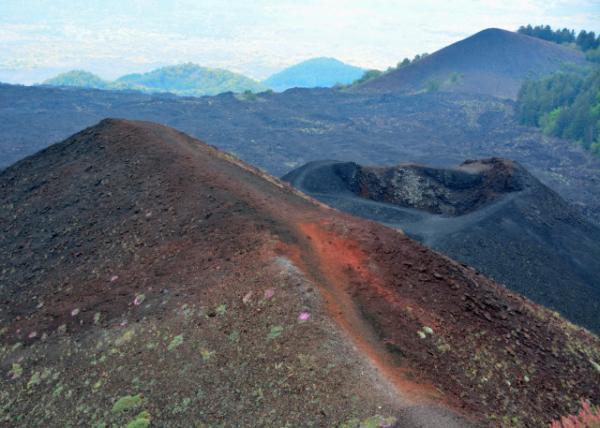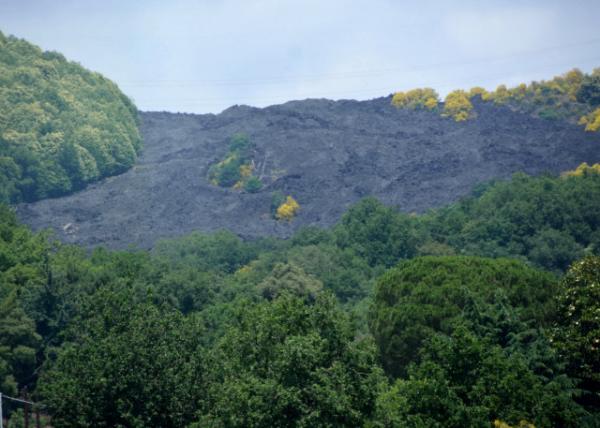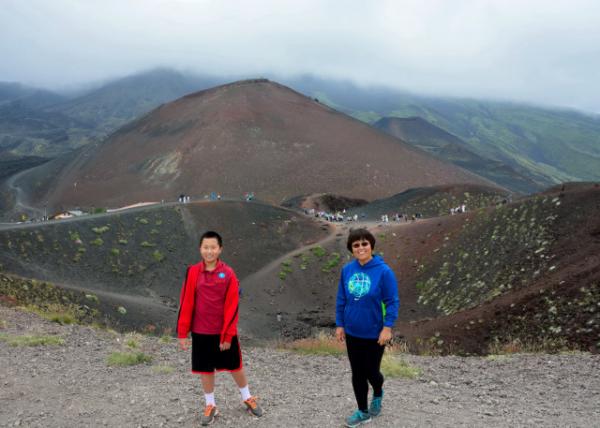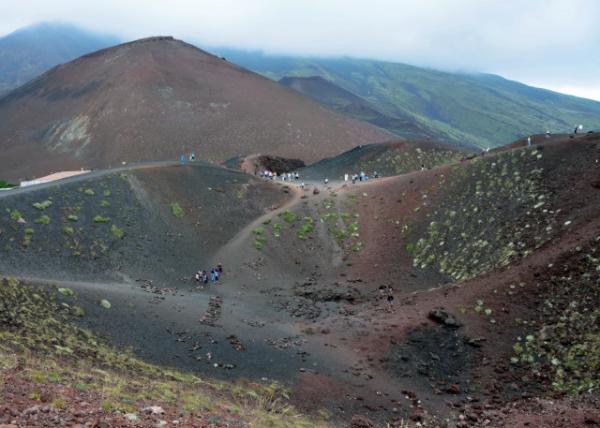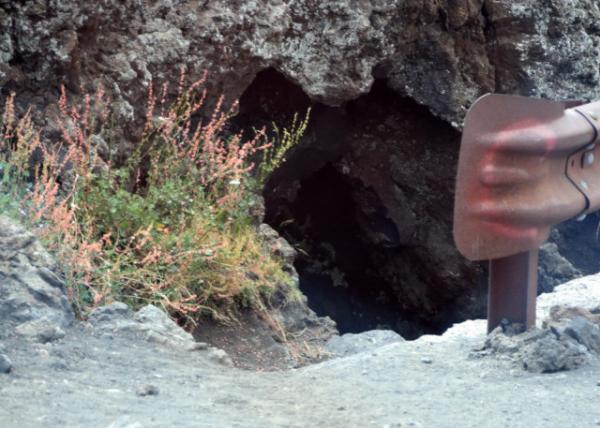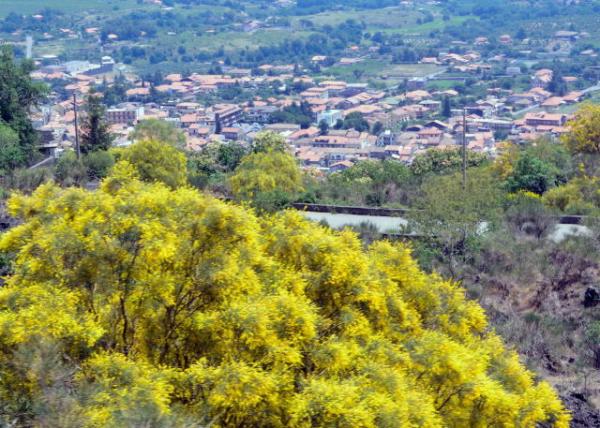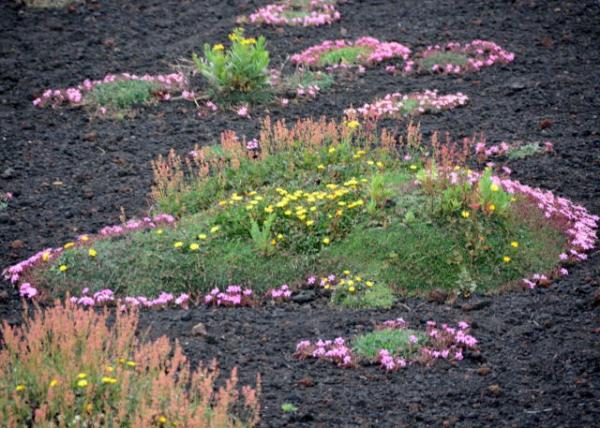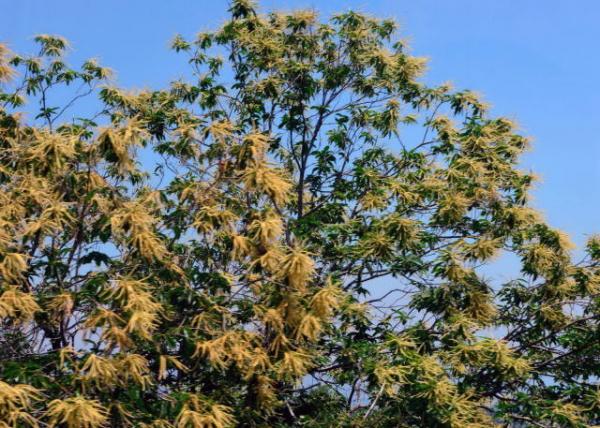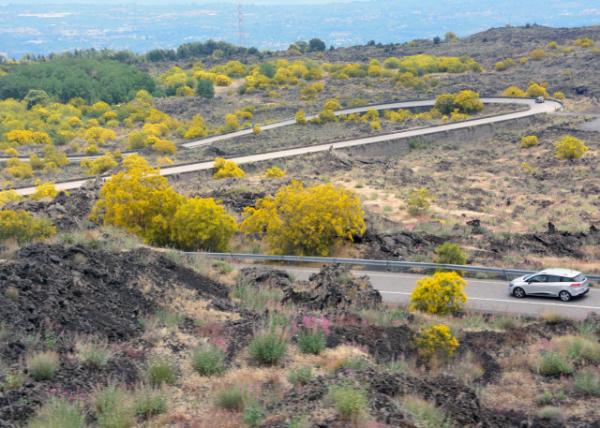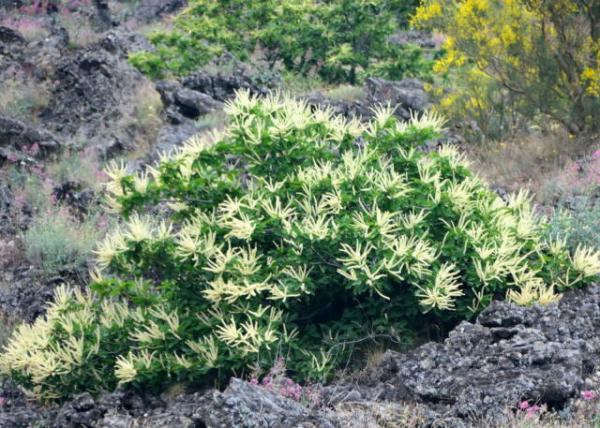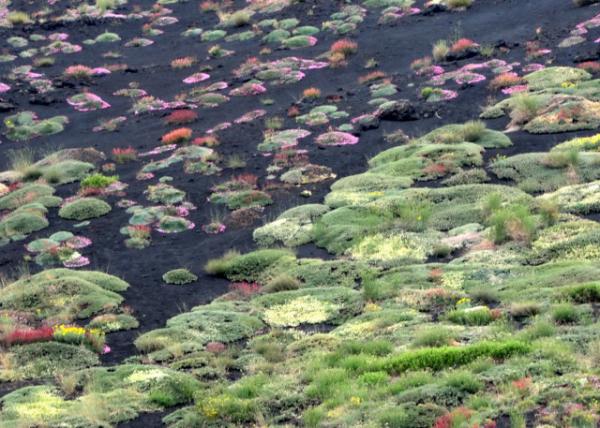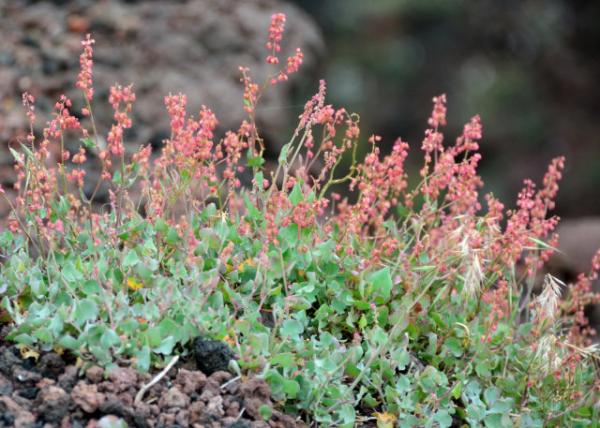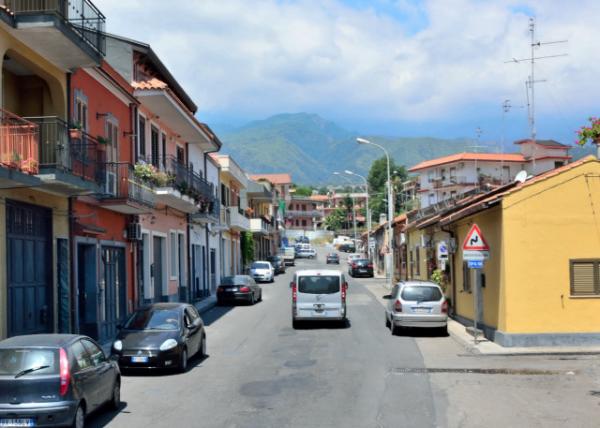| Mount Etna in Sicily, Italy(意大利西西里岛埃特纳火山) |
| 送交者: 天边的红霞 2020年05月01日07:59:52 于 [五 味 斋] 发送悄悄话 |
|
2015-07-02
【Aiden in English】 Everyone has heard of Mt. Vesuvius. It’s famous for the powerful eruptions that leveled cities. When it comes to Mt. Etna which towers almost 3,329 meters/10,922 feet above the sea level in Sicily, everyone goes “huh?” Well, you don’t have to destroy cities to be famous. Compared to Mt. Vesuvius, Mt. Etna is the tallest and most active volcano in Europe, and has much more sites to explore. All Mt Etna needs to surpass Mt. Vesuvius in fame is a cool sounding name and a stupid civilization that settles within a 16 km/10-mile radius. Most different of all, Mt. Vesuvius is a dormant volcano, while as Mt. Etna had put on a great fireworks show just last month in June of 2015. Yeah, it came just a few weeks ago! It didn’t make a confident builder, considering that’s where we were going on the unbearable hot day and perfectly organized, really. The bus was dropping the tourists in board off at 2,000 meters/6,562 feet, and I pulled out a jacket I thought that I was never gonna use again. It was in the 50F’s/10C’s, and seemed really refreshing. Throughout our slow drive up the slope, signs of ancient and recent lava flows scarred the mountain side. Terrifying moments passed though history here and there, at one point the lava even reaching inside a 30-meter/100-foot radius from a village. It was freaking out even to think about how the people lived so close by. Nowadays, lava to the civilians is a free firework show. What left behind was a flurry of natural activity. The Galapagos Islands are volcano, and so that’s just an example for the benefits of volcanic soil. Flowers grew on the mountain side, in cracks, on rocks, and everywhere imaginable. They were startling colorful with bright yellows to Sicilian green. At one point, a patch of area looked as if it was growing algae. What seemed to be an amazing natural phenomenon was simply a group of small green buds blooming in numbers like soapworts. This provoked a question of mine: was this a start to a wondrous place of nature like the Galapagos? Volcanic rock and soil is very fertile for farming, but more importantly, fertile for certain wild plants that grow. Was the only missing ingredient to the equation time? At 2,000 meters/6,562 feet, the volcano started to take shape. The fascinating Silvestri Spent Craters were splitting off the main mountain after erupted in 1986, and unfortunately that was the only thing we could explore. We were given a tiny 30 minutes! How are you supposed to explore an entire volcano in 30 minutes?! Nevertheless, we focused on a single crater with a great view of the countryside. What seemed odd about this particular volcano was that the area around it was pretty much flat. A plain surrounded the volcano, and to be honest, I think that the volcano more dangerous. If there aren’t any slopes to stop the lava flow, then you’ll have a very modern version of Pompeii. Another odd thing was a change in the rock color. Some were red, others were black, and some in regular shade of gray (not the TV show). The crater, at the bottom, was filled with red rocks, and my uncertainty to this different scenario was confirmed by the guide. When lava cooled, it hardened. (Let’s start out easy.) Pressure built in the rock that lava transformed into the tubing. (It’s getting a bit harder.) The rock then had two options: to burst or to contain the pressure. It the pressure kept contained, the gas in the lava was trapped inside, therefore making it gain weight and became a gray color. If the gas were released, the lave tubing would have light cracks with holes, and the color depended upon the chemical reactions to air when the gas was released. (It’s a little too hard, isn’t it?) Whatever the reason, Mom absolutely went crazy and picked some rocks to bring home. If you wish to see them, tickets are on sale now for $5 each. We are open from 10 am to 5 am. Season passes are available for $50 a person and come in the next seven days, and you’ll receive a free rock-of-year choice from our backyard! Although Mt. Etna has a deceiving name, it is a really amazing place to see. Volcanoes are a sign of destruction, but this mountain has many natural beauties of its own. So come and see some rocks at my house today! 【红霞译文】 人人都听说过维苏威火山,其威力超强并将周围几座全部夷为平地。西西里岛埃特纳火山海拔3329米/10922英尺左右,大家顶多疑惑地发出“嗯“的一声,这么说吧,火山完全不必靠有无毁灭性来一鸣惊人。 比起维苏威火山,埃特纳火山素以欧洲最高峰最活跃著称,至今很多地方频有爆发。埃特纳火山单凭声誉美貌及方圆16公里/10英里内乡镇林立,足以超越维苏威火山。当然两者之间最大区别在于,维苏威火山属于休眠火山,而埃特纳火山上个月也就是2015年6月份刚刚喷发了一次,说得一点没错,正好在今天亲临现场之前几个星期。鉴于这种情况,炎炎烈日下,我们一行诚惶诚恐地跟着导游奔赴景地。旅游大巴停靠2000米/6562英尺,所有游客从这里开始徒步前行。我拿出久压箱底的外套,想不到在这没它不成,此时外面气温仅有华氏50/摄氏10来度,凉气袭人。登山途中,旧时乃至新近生成的熔岩流随处可见,景观十分恐怖,有些岩浆竟然流到离村庄3米/10英尺以近的地方,简直不敢想象老百姓怎么胆敢住到火山跟前。如今当地人近水楼台,可以第一时刻免费观赏烟花表演,身后难免留下满目疮痍。与达尔文岛火山岛相似,由火山灰形成的土壤肥沃,山坡旁、裂缝里、岩石上百花齐放,令人激动不已,黄色西西里绿色明亮夺目,看上去有时倒觉得像苔藓植物,这些嫣紫姹红的肥皂草冒出绿芽竞相开放,让我禁不住扪心自问:难道这真是另外一个犹如达尔文岛奇妙的地方吗?火山岩层和火山泥土有助于农耕,重要的是如此丰富的养份足以扶植奇花异草,不正是植物生长所必需的要素吗? 从2000米/6562英尺开始,埃特纳火山地貌发生显著变化,西尔维斯特里·斯班特火山口自1986年爆发以来算是出尽风头,因为时间紧迫,我们别无选择地只能抓住它不放,卅分钟算个啥!怎么可能用这么短的功夫光顾其它地方?!既然如此,我们集中精力探寻这个被乡村环抱的单一火坑。奇怪的是,火山口周围非常平缓,我本以为周边空地同样比较危险,要不是山坡上凸起的部分挡住熔岩流,这里恐怕要变成另一个庞培古城。令人不解的还有岩石颜色,有的红,有的黑,有的灰暗(别跟电视播放的东西混为一谈),火山口底部为红色岩石,导游很快诠释存在我心底的疑虑,原来岩浆冷却后变硬(先从简单的入手),只要内部压力加大,熔岩就会转化成熔岩管(稍微难理解一点)。接下来岩石面临两种选择:要么破裂要么顶住内压,如果压力不减,熔岩便产生气体,但气体滞留在熔岩里,重量就会增加,颜色相应变灰;一旦气体释放出来,熔岩管出现裂缝,并伴有各种大小的窟窿,自身光泽则根据空气氧化后所形成的化学反应来定。(太难了,对吗?)不管出于什么动机,妈妈顺手牵羊,当即捡了几块火山石带回家来,因此假如你有兴趣,欢迎购票前来参观,票价五美元一张,我们早上十点开门,下午五点打烊,同时还出售五十美元一张的季节性联票,未来七天恭候光临,你会免费收到一份来自敝舍后院精心挑选的石子礼物。 尽管埃特纳火山名声不太好听,但绝对叫你大饱眼福,火山无疑给人类带来危害,不过埃特纳火山自然风景优美,现在先来我家看一看火山石再说!
|
|
|
|
|
 |
 |
| 实用资讯 | |
|
|
|
|
| 一周点击热帖 | 更多>> |
|
|
|
| 一周回复热帖 |
|
|
|
|
| 历史上的今天:回复热帖 |
| 2019: | 鹿儿与海——鹿儿 | |
| 2019: | 需要反思五四运动对中国传统文化的破坏 | |
| 2018: | 没有永远的敌人 | |
| 2018: | “回乡做‘芯片’就是自取灭亡” | |
| 2017: | 政府预算终获通过 川普似能知错即改 | |
| 2017: | 仁川登陆的设想是怎样开始的? | |
| 2016: | 所谓的普通话就是满话,是满大人使用的 | |
| 2016: | 冬冬:有关最低工资的问题 | |
| 2015: | 这条天路简直是美得惊心动魄,令人销魂 | |
| 2015: | 当我把这组照片发给国内朋友看时,他们 | |




